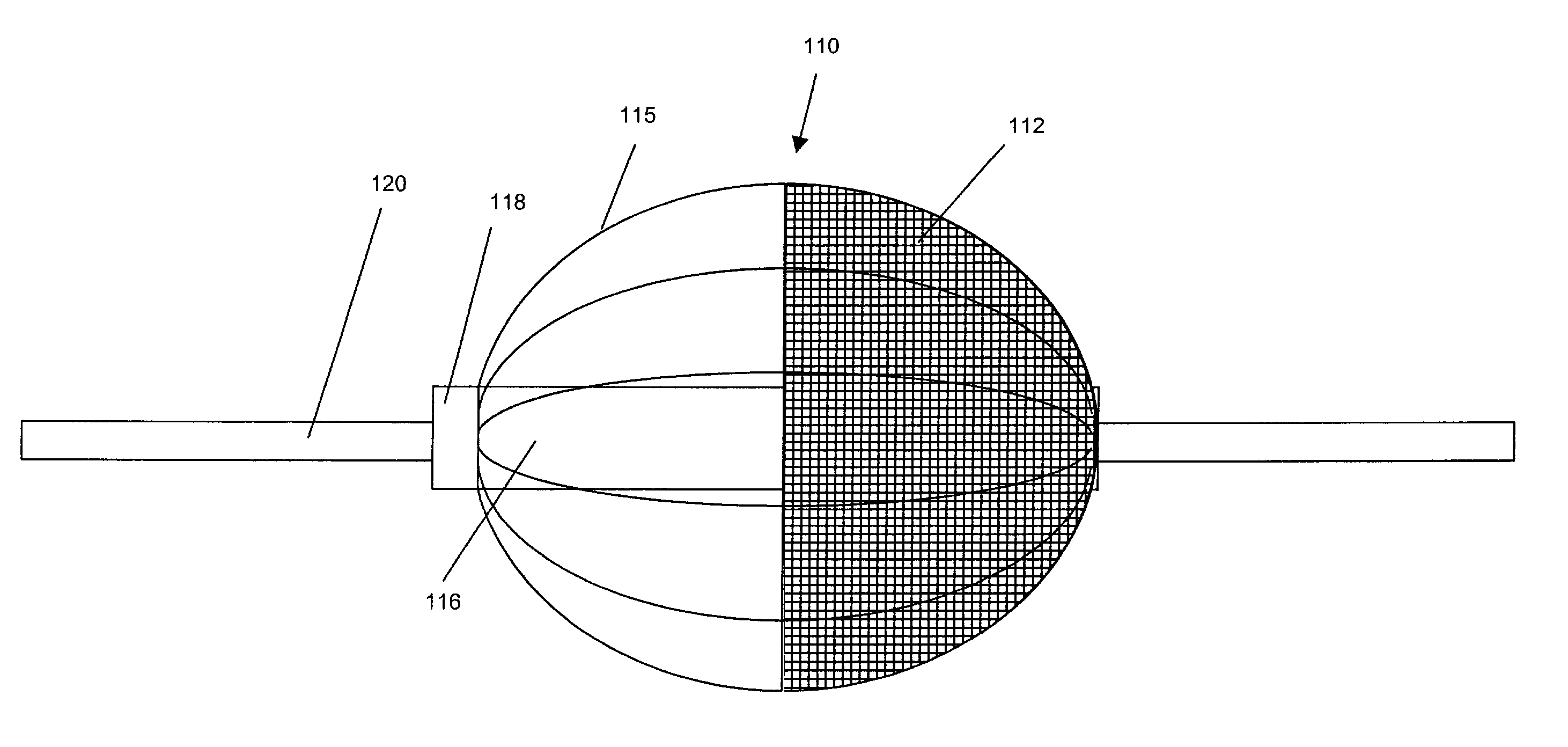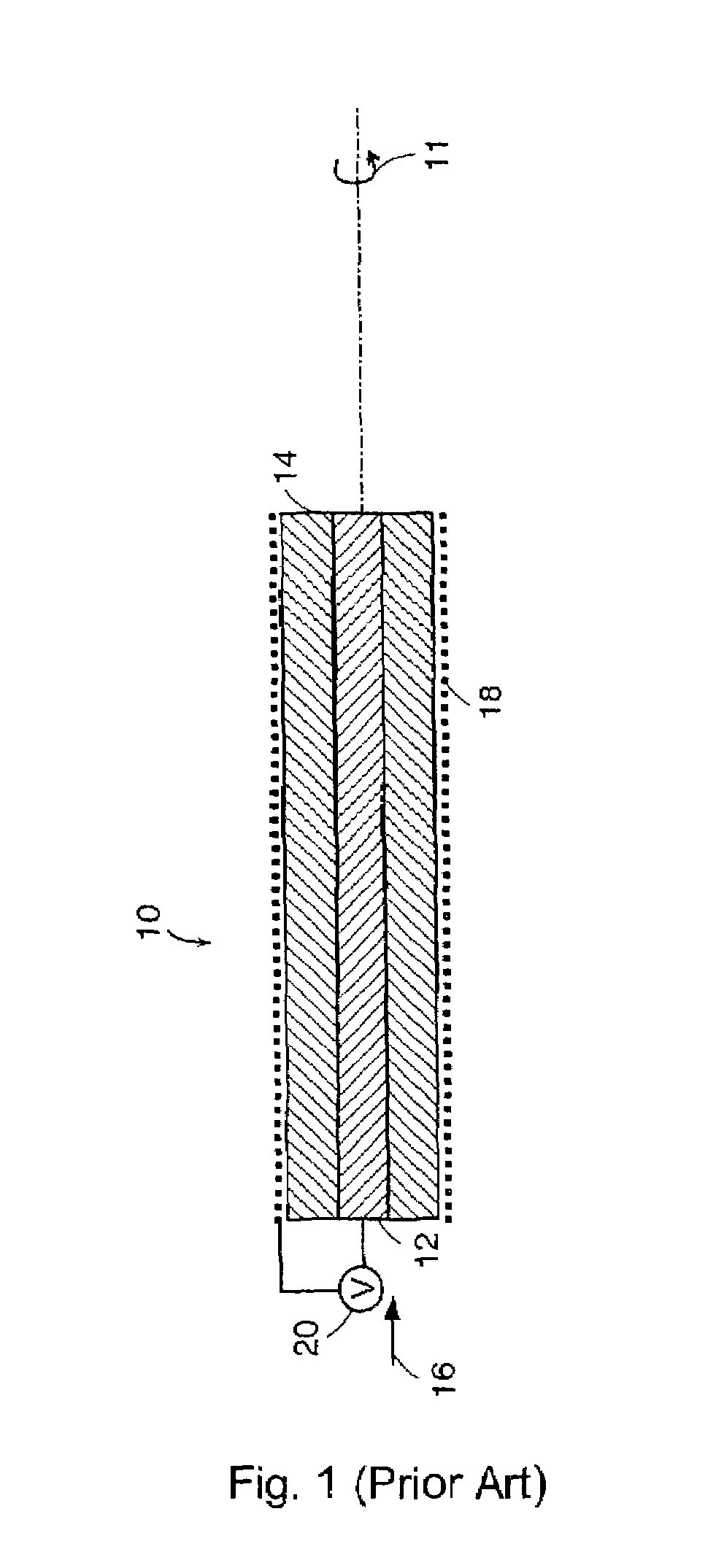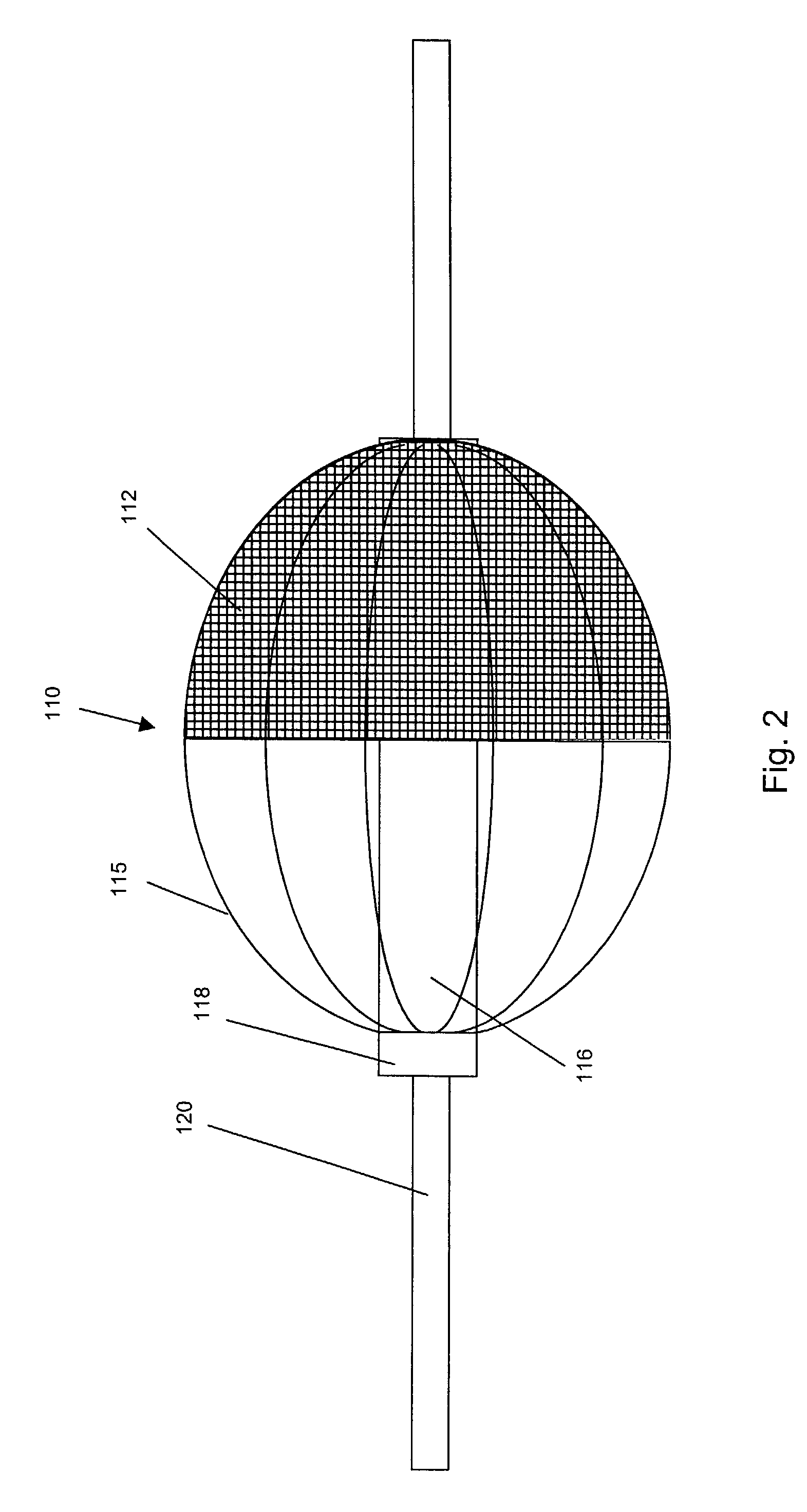Electroactive polymer actuated medical devices
- Summary
- Abstract
- Description
- Claims
- Application Information
AI Technical Summary
Benefits of technology
Problems solved by technology
Method used
Image
Examples
Embodiment Construction
[0044]According to a first aspect of the present invention, a filter apparatus is provided for use in minimally invasive procedures within a tubular body fluid conduit, such as vascular or other procedures where the practitioner desires to capture material that may be dislodged during the procedure.
[0045]One specific embodiment of a filter assembly 110 in accordance with the present invention will now be described with reference to FIG. 2. The filter assembly 110 is disposed along guidewire 120. The filter assembly 110 includes a filter element 112, which is typically formed from a suitable mesh or porous material that will filter particulate material (e.g., emboli from blood) while permitting sufficient perfusion therethrough. Such filter elements 112 are well known in the art.
[0046]In the embodiment shown, the filter element 112 is provided with an expandable support frame for outwardly deploying the filter element 112 in a fashion such that it substantially fills the cross sectio...
PUM
 Login to View More
Login to View More Abstract
Description
Claims
Application Information
 Login to View More
Login to View More - R&D
- Intellectual Property
- Life Sciences
- Materials
- Tech Scout
- Unparalleled Data Quality
- Higher Quality Content
- 60% Fewer Hallucinations
Browse by: Latest US Patents, China's latest patents, Technical Efficacy Thesaurus, Application Domain, Technology Topic, Popular Technical Reports.
© 2025 PatSnap. All rights reserved.Legal|Privacy policy|Modern Slavery Act Transparency Statement|Sitemap|About US| Contact US: help@patsnap.com



